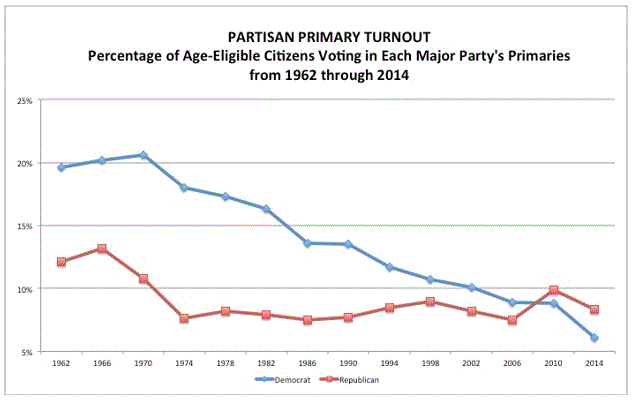It’s a paradox: The United States is supposed to be a beacon of democracy, yet Americans have one of the lowest levels of electoral participation in the world. In fact, a 2012 study found that the US ranked “120th of the 169 countries for which data exists on voter turnout, falling between the Dominican Republic and Benin.”
Our turnout rate has been consistently declining since the 1970s.
In Monday’s Washington Post, Aaron Blake highlighted a new study that suggests that trend is likely to continue in November’s midterm elections.
A new study shows that Americans are on-track to set a new low for turnout in a midterm election, and a record number of states could set their own new records for lowest percentage of eligible citizens casting ballots.
The study, from the Center for the Study of the American Electorate, shows turnout in the 25 states that have held statewide primaries for both parties is down by nearly one-fifth from the last midterm, in 2010. While 18.3 percent of eligible voters cast ballots back then, it has been just 14.8 percent so far this year. Similarly, 15 of the 25 states that have held statewide primaries so far have recorded record-low turnout.
Blake finds it ironic that so few vote at a time when Congress is less popular than colonoscopies, root canal or Nickelback. “Americans,” he writes, “appear prepared to deal with their historic unhappiness using perhaps the least-productive response: Staying home.” But this gets the causal relationship backwards — electoral apathy is in large part a result of government dysfunction. After logistical problems like having a disability, the number one reason why people don’t vote is that they feel their ballot won’t change anything.
Of course, we’re not all equally turned off by politics. Whites are more likely to vote than other groups, and older people are more likely to go to the polls than younger people. This is a source of endless consternation for Democrats. As Blake notes, “Republican primary turnout overtook Democratic turnout for the first time in 2010, and that difference is even bigger this primary season.”



